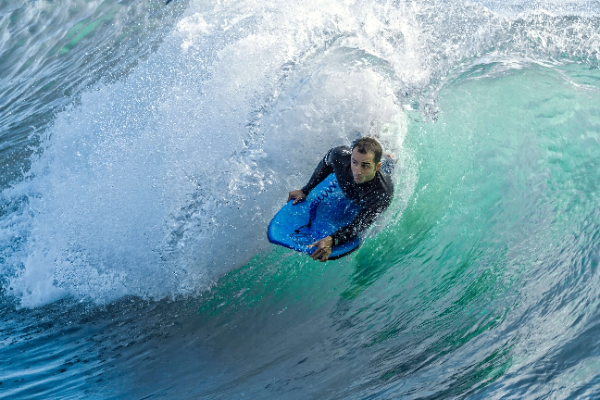In surfing, understanding wave terminology is essential for both safety and performance. One of the critical terms surfers often hear is “closed out.” This article delves deep into what “closed out” means, how it affects surfing, and strategies to handle such waves. We’ll cover everything from the basic definition to the impact on surf sessions and techniques to navigate or avoid closed out waves.
Surfing is more than just riding waves; it’s about understanding the ocean’s behavior. Waves come in different shapes and sizes, and each type offers unique challenges and experiences. For beginners and pros alike, recognizing wave patterns is crucial.
The Anatomy of a Wave
To grasp what “closed out” means, we first need to understand the basic anatomy of a wave. A wave consists of several parts:
- Crest: The highest point of the wave.
- Trough: The lowest point of the wave.
- Face: The front surface of the wave.
- Lip: The top edge of the wave that pitches forward as the wave breaks.
Types of Surfing Waves
Waves can be categorized based on how they break:
- Spilling Waves: These waves break gently and are ideal for beginners.
- Plunging Waves: These are more powerful, with the lip curling over and crashing down, suitable for experienced surfers.
- Surging Waves: These waves don’t break but surge up the beach, often seen in deep water near the shore.
- Closed Out Waves: When the wave breaks all at once along its length, making it difficult to ride.
What Does “Closed Out” Mean?
Definition of Closed Out
A wave is considered “closed out” when it breaks simultaneously along its entire length. Instead of offering a clean, rideable face, the wave collapses all at once. This phenomenon creates a wall of whitewater, making it nearly impossible to ride smoothly.
Identifying Closed Out Waves
Recognizing closed out waves is essential for making quick decisions in the water. Here are some indicators:
- Even Break: The wave breaks evenly from end to end.
- Lack of Shoulder: There’s no shoulder or unbroken part of the wave to ride.
- Wall of Water: The wave looks like a wall of water without a distinct peak.
Causes of Closed Out Waves
Several factors contribute to waves closing out:
- Wave Size: Larger waves are more prone to closing out.
- Bottom Contour: A uniformly shallow seabed can cause waves to break simultaneously.
- Swell Direction: Waves approaching the shore straight on are more likely to close out.
- Tide Levels: Certain tide levels can increase the likelihood of waves closing out.
Impact of Closed Out Waves on Surfing
Closed out waves can significantly affect a surf session:
- Limited Ride Time: The ride is usually very short.
- Increased Difficulty: Harder to navigate and perform maneuvers.
- Higher Risk: Greater risk of wipeouts and injuries.
Techniques to Handle Closed Out Waves
Experienced surfers develop techniques to deal with closed out waves:
- Quick Exit: Exiting the wave quickly before it closes out.
- Duck Diving: Diving under the wave to avoid getting caught in the whitewater.
- Wave Selection: Choosing waves that are less likely to close out.
Avoiding Closed Out Waves
While some waves are unavoidable, here are strategies to minimize encounters with closed out waves:
- Surf Reports: Checking surf reports and forecasts for ideal conditions.
- Location Choice: Surfing at spots known for better wave formation.
- Time of Day: Surfing during optimal tide conditions.
See Also: Which Beach Has Water Sports in Goa?
Conclusion
Understanding what “closed out” means in surfing is crucial for enhancing your surfing experience. By recognizing and adapting to closed out waves, surfers can improve their skills, enjoy longer rides, and reduce the risk of injuries. Knowledge of wave behavior and careful wave selection are keys to a successful and enjoyable surf session.
FAQ: What Does “Closed Out” Mean in Surfing?
Q: What does “closed out” mean in surfing?
A: In surfing, “closed out” refers to a situation where a surfer is unable to complete their wave ride due to an unexpected obstacle or event, such as a large wave breaking on top of them or a collision with another surfer.
Q: Why does a surfer get closed out?
A: A surfer may get closed out due to various reasons, including poor wave selection, misjudgment of the wave’s behavior, or external factors like wind changes or tide shifts.
Q: Is getting closed out common in surfing?
A: Yes, getting closed out is a common occurrence in surfing, especially for beginners and intermediate-level surfers who are still learning how to read waves and make quick decisions.
Q: How can I avoid getting closed out while surfing?
A: To avoid getting closed out, focus on improving your wave selection skills, learn to anticipate changes in wave behavior, and practice maintaining balance and control on the board. Also, stay aware of other surfers in the water to minimize collision risks.
Q: What should I do if I get closed out?
A: If you get closed out, try to relax and remain calm. Protect your head and body from the impact, and once the wave has passed, resurface and regain your bearings. Then, swim back to the surface and try again. Remember, it’s all part of the learning process!

